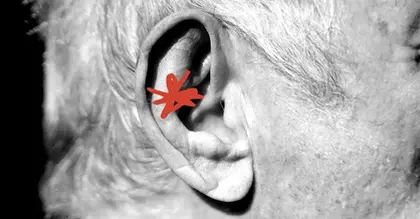What Is It?

Multiple myeloma is cancer of the bone marrow caused by the uncontrolled growth of plasma cells. These cells are one type of white blood cells. Normally, they make antibodies called immunoglobulins to fight infections.
In multiple myeloma, cancerous plasma cells multiply rapidly in the bone marrow and invade the outer layers of the bones. This can weaken bones so much that minimal trauma can cause a bone fracture at the cancer site.
The myeloma plasma cells also make too much of one specific type of immunoglobulin (an antibody protein). Large amounts of immunoglobulins in the bloodstream may cause the blood to become thick and sticky. This can lead to blood clots. These abnormally high immunoglobulin levels can also cause kidney damage.
In multiple myeloma, the blood levels of other antibodies drop, leaving the person open to infections.
Other problems that occur in people with multiple myeloma include
- high blood calcium levels, which can lead to dehydration, constipation, and confusion
- impaired kidney function
- low red blood cell counts (anemia).
A variant of multiple myeloma is called plasmacytoma. A plasmacytoma is a single collection of abnormal plasma cells in only one bone. Plasmacytomas cause bone pain but usually don't cause the problems associated with multiple myeloma.
Multiple myeloma is an uncommon cancer. It tends to occur in older people, developing around age 60. Other risk factors include exposure to
- radiation
- a toxic chemical called benzene
- pesticides.
Symptoms
Early on, multiple myeloma may not cause any symptoms. But as it progresses, symptoms can include
- bone pain, often in the back and ribs
- marked fatigue
- easy bruising
- loss of appetite
- nausea and vomiting
- confusion.
Diagnosis
Your doctor will order blood tests to check for anemia, which is a low level of red blood cells. The disease causes anemia when plasma cells crowd the bone marrow. This prevents the bone marrow from making red blood cells as usual.
Blood tests also can check for high levels of protein, a sign that large amounts of immunoglobulin are being made by plasma cells. You may be asked to collect your urine to see if it contains too much protein.
Your doctor may order x-rays of the long bones in your body, your skull, and your chest to confirm the diagnosis and check for weak bones.
A bone marrow biopsy also will be done to confirm an abnormally high level of plasma cells. The bone marrow is where red and white blood cells and platelets are made. Normally these cells will mature and get released into the blood stream.
During the procedure, your doctor removes a small amount of bone marrow with a long needle. The bone marrow is then looked at using a microscope. Normally, plasma cells account for a very small percentage of the cells in the bone marrow. Multiple myeloma is diagnosed if the biopsy shows more than 30% plasma cells. But a person can have multiple myeloma with a much lower percent of plasma cells if other criteria are met.
After diagnosis, laboratory tests will determine the extent of the cancer, which is described in "stages." The stage is assigned based on protein and calcium levels, kidney function, and the presence of cancer in the bone:
- Stage I — Few cancer cells have spread through the body. There may not be any symptoms of the disease.
- Stage II — A moderate number of cancer cells have spread through the body.
- Stage III — A large number of cancer cells have spread through the body. At this stage, patients may also have anemia, high levels of protein and calcium in the blood, and more than three bone tumors.
Expected Duration
Some patients die within three months of diagnosis. But in most cases, the illness progresses slowly for two to five years. Symptoms may then worsen rapidly.
Prevention
It may be possible to prevent multiple myeloma by avoiding
- radiation
- the toxic chemical benzene
- pesticides.
Treatment
If you do not have any symptoms, treatment may not start immediately. The primary decision after diagnosis is whether stem cell transplant is the best option.
Initial therapy consists of a combination of drugs. Some of the drugs used most often include bortezomib (Velcade), a corticosteroid (dexamethasone), and lenalidomide.
Additional therapies may include:
- infusions of bisphosphonates. This class of drug, often injected into a vein once a month, can decrease the risk of broken bones and prolong survival.
- infusions of immunoglobulins into a vein to prevent serious infections.
- radiation therapy to treat painful tumors in bones.
Stem cell transplant. Before this procedure, you receive high doses of chemotherapy to kill the cancer cells. Then you receive a transfusion of stem cells taken from the blood. These might have been taken from you before the chemotherapy started. This is called an autologous stem cell transplant. Sometimes the stem cells come from a donor. Stem cells can also be taken from bone marrow. The transplanted stem cells develop into healthy new blood cells.
None of these therapies seems to cure patients, but they may control the disease or delay its return for years.
When To Call a Professional
Call your doctor if you have persistent or recurrent
- bone pain
- nosebleeds
- prolonged bleeding after minor cuts
- bruising without any trauma
- marked fatigue.
Most often these symptoms are caused by some other medical problem, not multiple myeloma.
Prognosis
Overall, about one-third of multiple myeloma patients live more than five years. Patients who are diagnosed when the disease is at an early stage may live longer.
Additional Information
Multiple Myeloma Research Foundation
https://themmrf.org/
National Cancer Institute (NCI)
http://www.cancer.gov/
American Cancer Society (ACS)
http://www.cancer.org/




